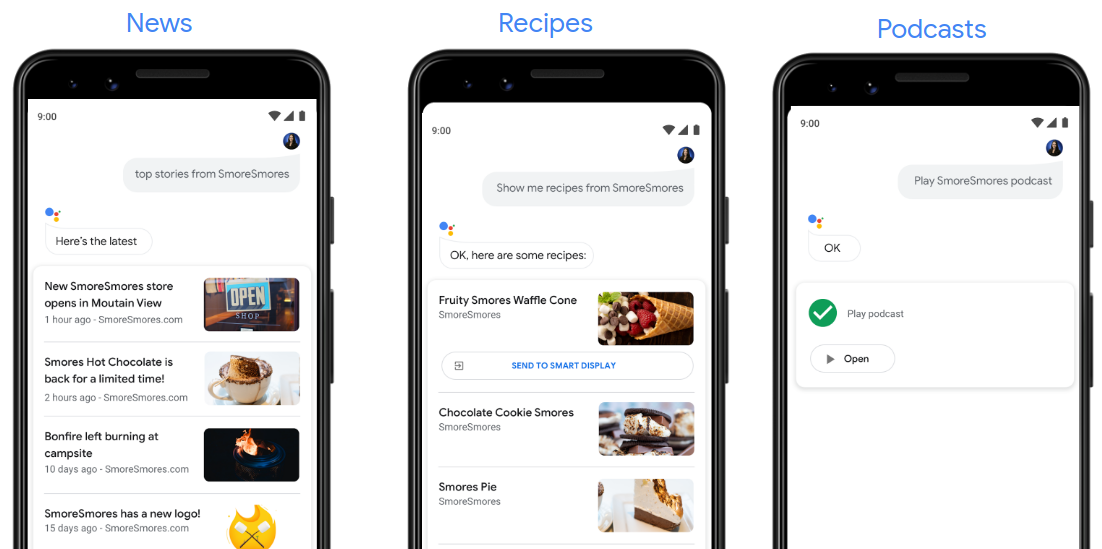Uporządkowane dane informują Google o typie treści, które tworzysz, dzięki czemu możemy prezentować je użytkownikom w interaktywny sposób. Poza wyświetlaniem treści jako wyników z elementami rozszerzonymi w wyszukiwarce Google możemy odczytywać znaczniki, aby automatycznie tworzyć akcję prezentującą Twoje treści w Asystencie Google i tworzyć wpis w katalogu Asystenta. Gdy użytkownicy poprosili Asystenta o jeden z dostępnych typów treści, możemy wyświetlić akcję.
Jeśli dopiero zaczynasz, dowiedz się, jak działają uporządkowane dane.

Opublikuj swoje treści
Na podstawie podanych przez Ciebie treści z internetu Google może generować różne działania. Zapoznaj się z listą obsługiwanych typów treści, aby dowiedzieć się, jak tworzyć akcje dla poszczególnych typów treści:
| Najczęstsze pytania | Użytkownicy, którzy proszą Asystenta Google o informacje na dany temat, mogą otrzymać treść najczęstszych pytań, aby uzyskać najlepsze odpowiedzi. Utwórz znaczniki treści najczęstszych pytań, abyśmy mogli automatycznie wygenerować akcję na podstawie Twoich informacji. Informacje o zapytaniach utworzonych za pomocą znaczników znajdziesz w dokumentacji najczęstszych pytań (w języku angielskim). |
| Media | Użytkownicy mogą odkrywać Twoje treści w wyszukiwarce i Asystencie Google oraz rozpoczynać odtwarzanie treści bezpośrednio w Twojej aplikacji lub na Twojej platformie. Informacje o konfigurowaniu treści multimedialnych znajdziesz w dokumentacji działań związanych z multimediami. |
| Wiadomości | W ramach Wiadomości Google użytkownicy mogą korzystać z Twoich treści za pomocą Asystenta Google, w tym z karuzeli najważniejszych artykułów. Gdy dodasz uporządkowane dane do stron AMP, możemy wyświetlać Twoje treści wiadomości w Asystencie Google. Informacje o konfigurowaniu treści artykułów z wiadomościami znajdziesz w dokumentacji uporządkowanych danych dotyczących artykułów. |
| Podcasty |
Użytkownicy mogą znaleźć Twój podcast w katalogu Asystenta i odtwarzać odcinki na swoich urządzeniach za pomocą Asystenta Google. Utwórz kanał RSS dla swojego podcastu, a my automatycznie wygenerujemy dla niego akcję. Więcej informacji o konfigurowaniu kanału podcastu znajdziesz w dokumentacji Podcastów. |

